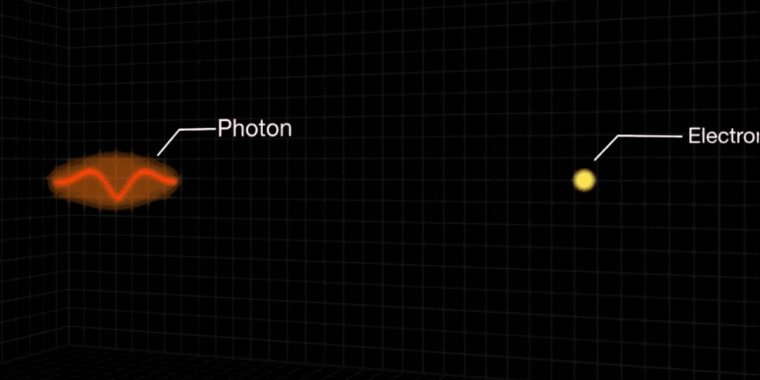| News / Science News |
NASA’s Fermi Mission Links Nearby Pulsar’s Gamma-ray ‘Halo’ to Antimatter Puzzle
NASA’s Fermi Gamma-ray Space Telescope has discovered a faint but sprawling glow of high-energy light around a nearby pulsar. If visible to the human eye, this gamma-ray “halo” would appear about 40 times bigger in the sky than a full Moon. This structure may provide the solution to a long-standing mystery about the amount of antimatter in our neighborhood.

Particles traveling near light speed can interact with starlight and boost it to gamma-ray energies. Photo: NASA's Goddard Space Flight Center
“Our analysis suggests that this same pulsar could be responsible for a decade-long puzzle about why one type of cosmic particle is unusually abundant near Earth,” said Mattia Di Mauro, an astrophysicist at the Catholic University of America in Washington and NASA’s Goddard Space Flight Center in Greenbelt, Maryland. “These are positrons, the antimatter version of electrons, coming from somewhere beyond the solar system.”
A neutron star is the crushed core left behind when a star much more massive than the Sun runs out of fuel, collapses under its own weight and explodes as a supernova. We see some neutron stars as pulsars, rapidly spinning objects emitting beams of light that, much like a lighthouse, regularly sweep across our line of sight.
Geminga (pronounced geh-MING-ga), discovered in 1972 by NASA’s Small Astronomy Satellite 2, is among the brightest pulsars in gamma rays. It is located about 800 light-years away in the constellation Gemini. Geminga’s name is both a play on the phrase “Gemini gamma-ray source” and the expression “it’s not there” — referring to astronomers’ inability to find the object at other energies — in the dialect of Milan, Italy.
Geminga was finally identified in March 1991, when flickering X-rays picked up by Germany’s ROSAT mission revealed the source to be a pulsar spinning 4.2 times a second.
A pulsar naturally surrounds itself with a cloud of electrons and positrons. This is because the neutron star’s intense magnetic field pulls the particles from the pulsar’s surface and accelerates them to nearly the speed of light.
Electrons and positrons are among the speedy particles known as cosmic rays, which originate beyond the solar system. Because cosmic ray particles carry an electrical charge, their paths become scrambled when they encounter magnetic fields on their journey to Earth. This means astronomers cannot directly track them back to their sources.
For the past decade, cosmic ray measurements by Fermi, NASA’s Alpha Magnetic Spectrometer (AMS-02) aboard the International Space Station, and other space experiments near Earth have seen more positrons at high energies than scientists expected. Nearby pulsars like Geminga were prime suspects.
Then, in 2017, scientists with the High-Altitude Water Cherenkov Gamma-ray Observatory (HAWC) near Puebla, Mexico, confirmed earlier ground-based detections of a small gamma-ray halo around Geminga. They observed this structure at energies from 5 to 40 trillion electron volts — light with trillions of times more energy than our eyes can see.
Scientists think this emission arises when accelerated electrons and positrons collide with nearby starlight. The collision boosts the light up to much higher energies. Based on the size of the halo, the HAWC team concluded that Geminga positrons at these energies only rarely reach Earth. If true, it would mean that the observed positron excess must have a more exotic explanation. (NASA)
YOU MAY ALSO LIKE





